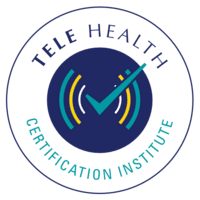The National Association of Social Workers (NASW) has the perennial responsibility of setting social work standards and ethics. In recent years, technological options for client engagement have flourished, resulting in an explosive demand for new mandates, guidelines, and tech boundaries in the social work field.
The NASW is the largest professional organization dedicated to ethical social work practice. Represented by 130,000 members from 50 US states, they have established safety principles for social workers and their clients. The NASW clinical social work standards are widely cited by students, professionals, and educators to inform their practice behaviors. Though they are the leading member organization, the NASW partners with other social work groups. An example of their partnership is with The Association of Social Work Boards (ASWB). The NASW used the ASWB’s 2015 Model Regulatory Standards for Technology and Social Work Practice as a partial framework for the 2017 Technology in Social Work Practice Guidelines. The 2017 document represents the most current provisions for the ethical use of technology. In addition to the NASW and ASWB, the Council on Social Work Education (CSWE) and the Clinical Social Work Association (CSWA) have contributed to the current technology recommendations for the social work profession. The four collaborative organizations arrived at the 2017 standards after forming the Task Force for Technology Standards in Social Work Practice.
During a two-year review process, the task force considered research from the scientific literature, contrasted technology used in other professions, assessed jurisdictional ordinances, accepted comments from the public, and created an additional subcommittee. Through their joint effort, a sincere commitment to safety has emerged. A few of the major questions touched upon in the 2017 guide include—
- Why is technology important for social workers?
- What technology do social workers use?
- How can social workers use technology responsibly and ethically?
- Is it safe to practice telehealth as a social work novice?
The Technology in Social Work Practice guidelines have affirmed that social workers are utilizing technology at unprecedented rates. Phone sessions, videoconferencing, self-guided internet activities, apps, tutorials, and online therapy are vying for attention and dizzying social workers in the process. Staying grounded in social work standards and ethics is a necessity for every practicing social worker, particularly those utilizing telehealth to deliver essential services.
The 2017 guidelines recommended four sections for safety technology standards: providing information to the public; developmental and delivery services; gathering, maintaining, storing, and accessing client data; and educating or supervising social workers. The choices that social workers make for their practice inevitably determine the suggested steps to stay in good professional standing.
For instance, online counseling sessions have prompted the use of firewalls, encryption programs, and reliable antivirus software to keep client information secure; while Smartphones have introduced text message etiquette and boundary discussions in the therapy room. Remaining on the right side of these fast-paced technological changes calls for a proactive commitment by the profession.
Technology has aligned our global community with a wealth of digital assets. In this online bubble, connections can be made thousands of miles apart. But these same assets have also put local, state, and federal standards into jeopardy. Being a proactive, accountable, and diligent social worker is just part of the package when serving vulnerable populations. Whether you’re figuring out how to safely send messages to clients or manage their health records, the technology boom has brought both opportunity and vulnerability to a sophisticated profession.
Learn a lot more about social work technology standards and earn 3.5 free CE hours. We are proud to announce that the chair (Frederic G. Reamer, PhD) of the Technology Standards Task Force, responsible for the creating of the Technology in Social Work Practice Guidelines document, along with Attorney Robert Landau will present on these standards on February 5th, 1-5 PM EST.
Byline: Michael Tugendhat, MLitt
Sources:
Association of Social Work Boards. (2017). Technology standards in social work practice. (Description: This article details the two-year review process and task force that created the 2017 technology standards in social work practice). Retrieved here.
Association of Social Work Boards. (n.d.). About ASWB. (Description: This is the official website of the ASWB and can be accessed for social work licensure guidelines) Retrieved here
Knight, S. A. (2017). New technology standards guide social work practice and education. Social Work Today, 17(4), 10. (Description: this article covers some of the highlights that were reported in the Standards for Technology in Social Work Practice report). Retrieved here.
NASW. (2017). NASW, ASWB, CSWE, & CSWA Standards for Technology in Social Work Practice. (Description: The leading, most respected guide for social work tech standards).




The course was so informative and I was glued to my screen for the entire duration. I received so much knowledge concerning ethics in telehealth and I am greatly encouraged to read about all the standards and policies that pertain to my practice. Thank you!.